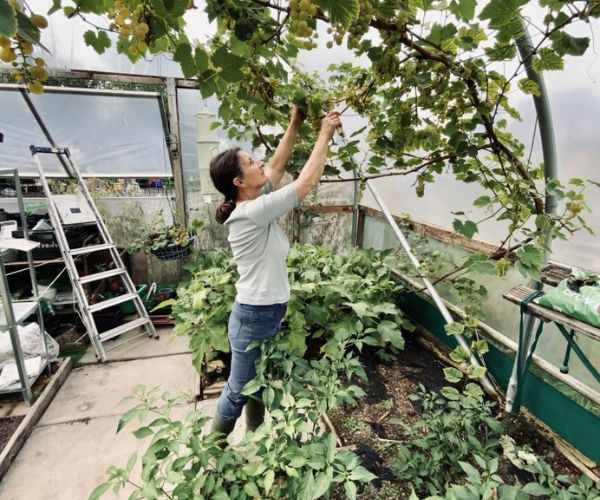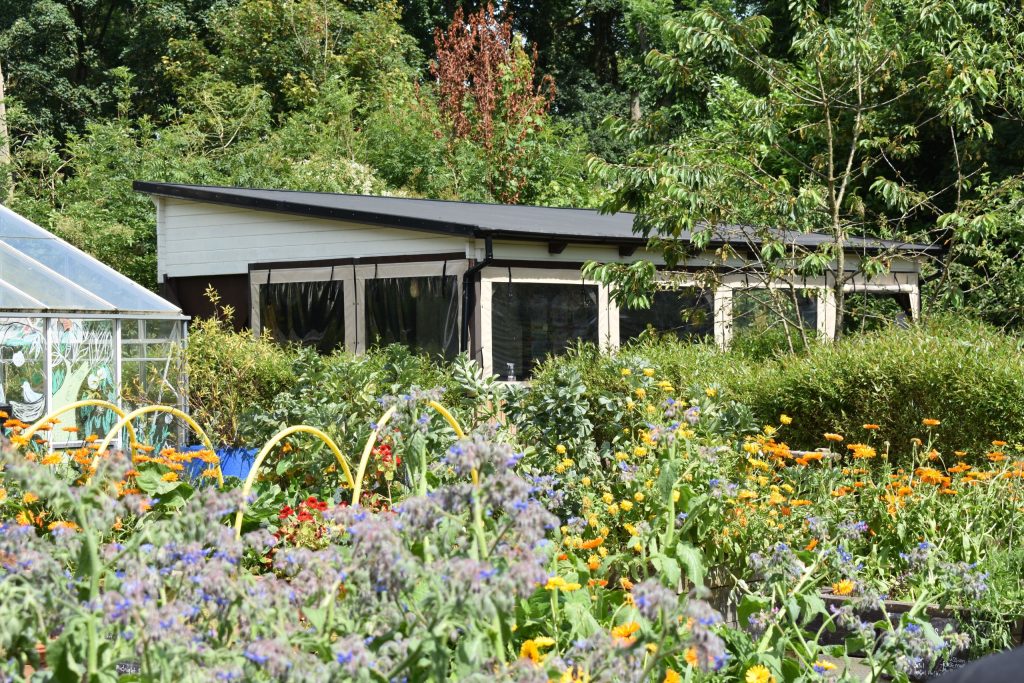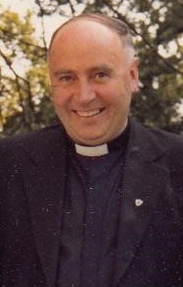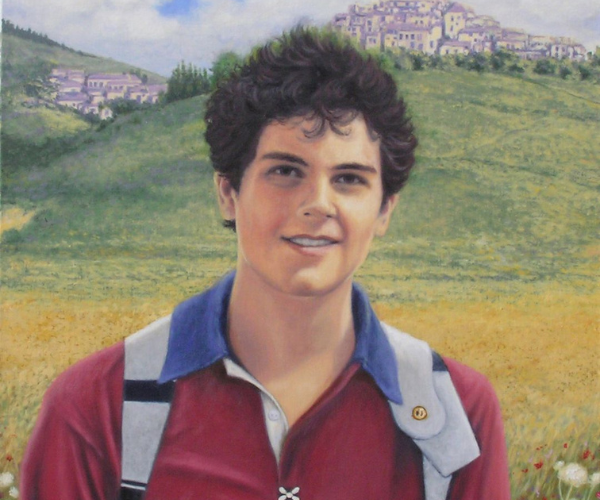
Becoming Stewards of the Earth
Tuesday 3rd September 2024We begin our Season of Creation journey today by exploring more about how we can use our land and outdoor space to boost biodiversity in our own corner of creation.
This week, we revisit the story of our very own Laudato Si’ Centre to explore the impact this project has had on local land and wildlife, before sharing one or two ideas to become responsible stewards of the earth.
Five years ago, the Diocese of Salford began a bold new chapter in its response to Pope Francis’ call to care for creation, as Bishop John announced plans to create a centre of learning and good practice at his residence of Wardley Hall.
Named the Laudato Si’ Centre after the papal document, work soon began on this ambitious project, transforming a disused area of grassy earth into a hive of environmental activity to trigger practical action across the diocese.
Dr Emma Gardner, Head of Environment for the Diocese of Salford, recalls the early days of the project, following the restrictions of the pandemic.
She said: “As COVID restrictions eased, we were fortunate to spend time in the garden reflecting on its beauty and potential to support nature and people, leaving us excited to develop the space further, and help people connect to God’s creation.
“Work started to plant trees as part of a forest garden and plants to support pollinators and other wildlife. Alongside this, we started to develop programmes to invite people back into the space with a focus on learning, spirituality, and wellbeing.”
Fast forward to today and the Centre is a burgeoning hub of ecological teaching, practical action, and prayerful reflection, creating opportunities for schools, parishes, and community groups to respond to the cry of the earth and cry of the people.
Since 2019, the Centre has received funding that has enabled the team to transform the unused space into a haven for wildlife complete with:
- 200 trees
- 2,500 native bulbs
- Four new native hedgerows totalling more than 300 metres
- A dead hedge around 200 metres
- Four wildflower meadow areas
- A living willow sculpture
- Hundreds of plants of various species that all benefit wildlife
- 20 bird/bat boxes
- Two Hedgehog Houses
- A Bug Hotel
- Wormery
- Pond
- Composting areas
- Outdoor learning spaces
- Woodland trails
- Woodland activities including a den building space and music area made from repurposed materials.
Emma continued: “It’s been so uplifting to see our Centre grow and develop into this beautiful sanctuary over the years, and the team and I are proud to be able to provide a place of protection for our local wildlife.
“We do not use any chemicals on the earth and have changed the mowing regime to allow sections of the grass to grow long, which benefits wildlife.
“Other flowers and grasses have grown in the areas that were once now mowed intensively, populations of insects have increased, and also that of small mammals, and we have seen more birds of prey that feed on small mammals.
“As well as our thriving wildlife, it’s been so encouraging to see our visitor numbers growing too. Each day, we welcome new and existing people to the Centre to learn more about how they can emulate our work in their own communities.”
This year alone, the Centre has welcomed more than 2,000 people who have come to spend time or pray in nature, or develop skills and learning through a range of courses and workshops that help people learn how to garden for wildlife and wellbeing, and to survey for wildlife.
Emma said: “It has been wonderful to share the space with so many people and to see the impact on individuals and groups that visit; from the smiles on faces, to people leaving with ideas of what they can do to care for creation.”
Top Tips for Practical Action
Beginning the journey to improving your outside space can be daunting, especially when space, or time, human, and financial resources are limited.
But our team at the Laudato Si’ Centre has a wide array of tips and ideas to help you make a difference, however small.
These include:
- Not using pesticides, herbicides, fungicides, artificial fertilisers on any land and planning in time to care for the space
- Using products inside and outside that are environmentally and animal-friendly, biodegradable, recycled and recyclable, and fairly traded
- Identifying areas that can be set aside for nature and refrain from frequent mowing
- Planting native trees and shrubs
- Encouraging wildlife such as building a hedgehog house, bug hotel, installing bird or bat boxes, providing a bird bath, small pond, or even a dish with pebbles and water for wildlife
- Never using poisons
- Using water-based paints, sealants, and adhesives when decorating
- Avoiding putting pollutants into the drain
- Introducing planters or window boxes and filling with plants that attract a variety of insects
- Collecting seeds to sow the next year.
For advice and guidance on how to get started, please contact our Laudato Si’ Centre team, who are on hand with a wealth of wisdom, tools, and resources to help you on your way!
Email laudatosi@dioceseofsalford.org.uk or click here to download our brochure.
Tagged | Environment | Laudato Si' Centre | Season of Creation






